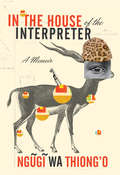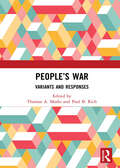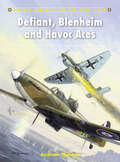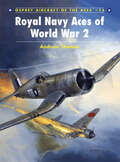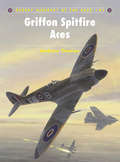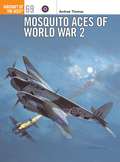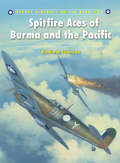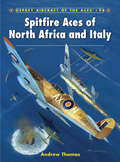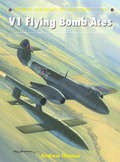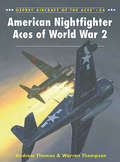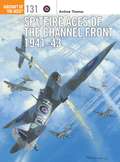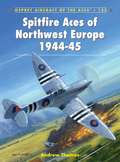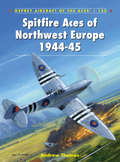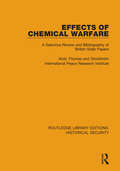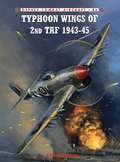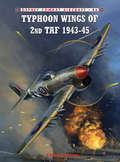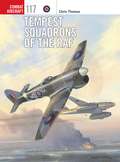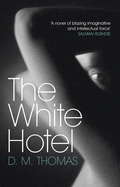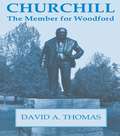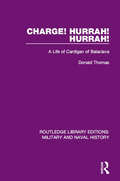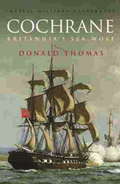- Table View
- List View
In the House of the Interpreter: A Memoir
by Ngugi Wa Thiong'ODuring the early fifties, Kenya was a country in turmoil. While Ngugi enjoys scouting trips, chess tournaments and reading about Biggles at the prestigious Alliance School near Nairobi, things are changing at home. He arrives back for his first visit since starting school to find his house razed to the ground and the entire village moved up the road closer to a guard checkpoint. Later, his brother, Good Wallace, who fights for the rebels, is captured by the British and taken to a concentration camp. Finally, Ngugi himself comes into conflict with the forces of colonialism when he is victimised by a police officer on a bus journey and thrown in prison for six days. This fascinating memoir charts the development of a significant voice in international literature, as well as standing as a record of the struggles of a nation to free itself.
People’s War: Variants and Responses
by Thomas A. Marks and Paul B. RichFar from being an anachronism, much less a kit-bag of techniques, people’s war raises what has always been present in military history, irregular warfare, and fuses it symbiotically with what has likewise always been present politically, rebellion and the effort to seize power. The result is a strategic approach for waging revolutionary warfare, the effort “to make a revolution.” Voluntarism is wedded to the exploitation of structural contradiction through the building of a new world to challenge the existing world, through formation of a counterstate within the state in order ultimately to destroy and supplant the latter. This is a process of far greater moment than implied by the label “guerrilla warfare” so often applied to what Mao and others were about. This volume deals with the continuing importance of Maoist and post-Maoist concepts of people’s war. Drawing on a range of examples that include Peru, Colombia, Bolivia, the Caucasus, and Afghanistan, the collection shows that the study of people’s war is not just an historical curiosity but vital to the understanding of contemporary insurgent and terrorist movements.The chapters in this book were originally published as a special issue of Small Wars & Insurgencies.
Defiant, Blenheim and Havoc Aces (Aircraft of the Aces #105)
by Andrew ThomasThe Blenheim IF flew some of Fighter Command's early offensive operations, and the type soon proved vulnerable when pitted against single-seat fighters. However, for much of 1940 the Blenheim fighter squadrons provided the RAF's main long-range convoy escort and nightfighter capability. In the mid-1930s, in an attempt to capitalise on its expertise in power-operated gun turrets, the Boulton Paul Company developed the Defiant, a single-engined fighter in which all the armament was concentrated in the turret behind the pilot. Intended as a 'bomber destroyer', the Defiant had its combat debut over Dunkirk, and initially achieved some considerable success. A number of American-built aircraft called Douglas DB-7 light bombers (named Havoc by the RAF), were fitted with radar for nightfighter duties and others successfully replaced the Blenheim as night intruders. A total of 11 pilots claimed five or more victories when flying these three types to become aces, whilst no fewer than 33 who became aces claimed at least part of their scores when flying the Blenheim, Defiant or Havoc.
Royal Navy Aces of World War 2 (Aircraft of the Aces)
by Andrew ThomasThe Fleet Air Arm (FAA) of the Royal Navy served with distinction in every theatre of war throughout World War II. From its poorly equipped beginnings it started the war with few suitable, modern, carrier-born fighters to the final campaigns over the Japanese home islands, the FAA proved an effective fighting force wherever it went. FAA Pilots had the distinction of being responsible for both the first, and last, enemy aircraft to be shot down during the war. Featuring first hand accounts, combat reports, photographs from private collections and an array of colour plates depicting the range of profiles and symbolic markings that were used, this book will detail the history and combat experiences of these forgotten pilots who served with such distinction for the Allied cause.
Griffon Spitfire Aces (Aircraft of the Aces #81)
by Andrew Thomas Mr Chris DaveyModified for low-level operations to counter Luftwaffe attacks on the south coast, the Griffon-powered Spitfire XIV became the best low-level fighter of World War II. Squadrons moved to south-eastern England to counter the V1 flying bomb offensive, where daring pilots pioneered the technique of tipping the V1 over with the aircraft's wingtip to disorientate the bomb. Andrew Thomas also investigates the role played by the modified Spitfire squadrons after the V1 offensive, both in the attack on Germany and after the war in Malaya and Palestine. First-hand stories, photographs and colour profiles complete this account of the aces who flew the most powerful Spitfire variant ever built.
Mosquito Aces of World War 2 (Aircraft of the Aces)
by Andrew Thomas Mr Chris DaveyThe Mosquito developed into one of the most versatile aircraft of World War 2, entering service with Fighter Command in early 1942. The 'Mossie' was soon defending raids on Britain's Cathedral cities and became an integral part of the country's night defences. Its airborne radar gave it the ability to 'see' the enemy at night, and its speed and devastating fire power made it the finest nightfighter deployed by any side during World War 2. This book examines the infamous Mosquito, the nightfighter that was used by many leading RAF, Commonwealth and American aces.
Spitfire Aces of Burma and the Pacific (Aircraft of the Aces #87)
by Andrew Thomas Mr Chris DaveyThe arrival of the Spitfire in Burma came at a crucial time as the RAF struggled against the Japanese to support the Chindit operation on the ground. Proving a huge boost to morale, the Spitfire played a large part in defeating the enemy, and covering the subsequent Allied advance through Burma, protecting the ground troops and providing vital supplies. Covering this little documented aerial war, this book tells the stories of the 54 aces who flew against the Japanese, and also those who fought in India and Australia. Full-colour artwork reveals the markings and paint schemes of this most-famous of British planes, whilst first-hand accounts and archive photographs bring the aerial battles of Burma, India and Australia to life.
Spitfire Aces of North Africa and Italy (Aircraft of the Aces)
by Andrew Thomas Mr Chris DaveyAlthough most famous for their role in the Battle of Britain, many Spitfire squadrons also served in the Mediterranean theatre, aiding the Allied victories in North Africa and later in the invasion of Italy. Numerous pilots, both Royal Air Force and South African Spitfire squadrons, made ace during these engagements. This book tells their story.
V1 Flying Bomb Aces (Aircraft of the Aces #113)
by Andrew Thomas Mr Chris DaveyShortly after the Allied landings in France the Germans unleashed the first of their so-called 'revenge weapons', the V1 flying bomb. Launched from specially constructed sites in northern France, the fast, small, pulse-jet powered pilotless aircraft were aimed at London with the sole intent of destroying civilian morale to the point where the British government would be forced to sue for peace. This dangerous new threat drew an immediate response, and the Air Defence of Great Britain (as Fighter Command had been temporarily renamed) established layers of defence that included a gun line and balloon barrage. The main element, however, were standing patrols by the fastest piston-engined fighters available to the RAF – the new Tempest V and Griffon-powered Spitfire XIV. Other types were allocated too, most notably the Polish Mustang wing, while night defence was left in the capable hands of several dedicated Mosquito squadrons. Although pilotless, the V1 was no easy foe thanks to its speed, powerful warhead and sheer unpredictability. Nevertheless, 154 pilots became V1 aces, 25 of whom were also aces against manned aircraft.
American Nightfighter Aces of World War 2 (Aircraft of the Aces #84)
by Andrew Thomas Mr Chris Davey Mr Mark Postlethwaite Mr Warren ThompsonThe Americans lagged behind their European contemporaries in military aviation in the late 1930s, and it took the Battle of Britain to awaken America to the necessity of having aircraft that could defend targets against night-time attack by bomber aircraft. This book examines the numerous aircraft types that were used by the US in this role, beginning with the early stop-gap conversions like the TBM Avenger, Lockheed Ventura and the A-20 Havoc (P-70). It goes on to detail the combat history of the newer, radar-equipped Hellcats, Corsairs and Black Widows that were designed to seek out enemy aircraft and which registered most of the kills made by the Navy, Marine Corps and USAAF in 1944–45. With full-colour profiles and rare photographs, this is an absorbing account of an underestimated flying force: the American Nightfighters.
Spitfire Aces of the Channel Front 1941-43 (Aircraft of the Aces #131)
by Andrew Thomas Mark Postlethwaite Chris Thomas80 years after the Spitfire was first developed it remains an icon of military aviation. Though many associate its victory during the Battle of Britain as the high point in the history of the Spitfire, the years following were of equal importance. Having weathered the initial storm, at the start of 1941 Fighter Command took the fight to the Germans with offensive missions over the Channel.This book reveals how first using the Spitfire I and II, and then following the introduction of the Bf 109 the cannon-armed Spitfire V, RAF squadrons embarked on a range of missions which included one of the most important air battles of the war, over Dieppe on 19 August 1942. Alongside British pilots were squadrons manned by exiled Europeans and pilots from the RAAF, RCAF and RNZAF. In just three years over 100 of these pilots were to rack up ace status in the Spitfire.
Spitfire Aces of Northwest Europe 1944-45 (Aircraft of the Aces)
by Andrew Thomas Chris ThomasThis book traces the achievements of the pilots flying the iconic Spitfire in Northwest Europe, and examines how the steady technological improvements that were made throughout the Spitfire's service life improved its capabilities in the air. Based at airfields throughout southern England, Merlin engine Spitfires provided the bulk of the air cover for the D-Day landings and it was an RCAF Spitfire which claimed the first ever ME 262 jet kill. 36 colour profiles covering a broad spectrum of nationalities, units, pilots, theatres and markings complement thorough research throughout this comprehensive account of these crucial fighter aircraft.
Spitfire Aces of Northwest Europe 1944-45 (Aircraft of the Aces #122)
by Andrew Thomas Chris ThomasThis book traces the achievements of the pilots flying the iconic Spitfire in Northwest Europe, and examines how the steady technological improvements that were made throughout the Spitfire's service life improved its capabilities in the air. Based at airfields throughout southern England, Merlin engine Spitfires provided the bulk of the air cover for the D-Day landings and it was an RCAF Spitfire which claimed the first ever ME 262 jet kill. 36 colour profiles covering a broad spectrum of nationalities, units, pilots, theatres and markings complement thorough research throughout this comprehensive account of these crucial fighter aircraft.
Spitfire Aces of the Channel Front 1941-43 (Aircraft of the Aces #131)
by Andrew Thomas Chris Thomas Mr Mark Postlethwaite80 years after the Spitfire was first developed it remains an icon of military aviation. Though many associate its victory during the Battle of Britain as the high point in the history of the Spitfire, the years following were of equal importance. Having weathered the initial storm, at the start of 1941 Fighter Command took the fight to the Germans with offensive missions over the Channel.This book reveals how first using the Spitfire I and II, and then following the introduction of the Bf 109 the cannon-armed Spitfire V, RAF squadrons embarked on a range of missions which included one of the most important air battles of the war, over Dieppe on 19 August 1942. Alongside British pilots were squadrons manned by exiled Europeans and pilots from the RAAF, RCAF and RNZAF. In just three years over 100 of these pilots were to rack up ace status in the Spitfire.
Effects of Chemical Warfare: A Selective Review and Bibliography of British State Papers (Routledge Libary Editions: Historical Security)
by Andy Thomas Stockholm International Peace Research InstituteOriginally published in 1985, this book is the result of an exploration of the state papers of the United Kingdom undertaken with the aim of discovering information about the past use of chemical warfare. This information may serve as a point of historical reference in speculation upon the possible nature and consequences of large-scale chemical warfare recurring in Europe. Part I of the monograph concentrates primarily on material documenting the use of chemical weapons in the First and Second World Wars, the impact of this use on the civilian populations of France and Belgium, casualties incurred in the production, research, development, training and deployment of chemical warfare agents, and the attempts made to incorporate chemical weapons into military doctrine and war-preparedness. Part II supplements the citation of documents in Part I. It comprises an ordered bibliography listing not only the location of the records found to be of primary concern to this study, but also the location of other records not cited in Part I which appear to form much of the remainder of the official record of the British CW effort. A list of some of the papers which have not been released comprises the concluding section.
Effects of Chemical Warfare: A Selective Review and Bibliography of British State Papers (Routledge Libary Editions: Historical Security)
by Andy Thomas Stockholm International Peace Research InstituteOriginally published in 1985, this book is the result of an exploration of the state papers of the United Kingdom undertaken with the aim of discovering information about the past use of chemical warfare. This information may serve as a point of historical reference in speculation upon the possible nature and consequences of large-scale chemical warfare recurring in Europe. Part I of the monograph concentrates primarily on material documenting the use of chemical weapons in the First and Second World Wars, the impact of this use on the civilian populations of France and Belgium, casualties incurred in the production, research, development, training and deployment of chemical warfare agents, and the attempts made to incorporate chemical weapons into military doctrine and war-preparedness. Part II supplements the citation of documents in Part I. It comprises an ordered bibliography listing not only the location of the records found to be of primary concern to this study, but also the location of other records not cited in Part I which appear to form much of the remainder of the official record of the British CW effort. A list of some of the papers which have not been released comprises the concluding section.
Typhoon Wings of 2nd TAF 1943–45 (Combat Aircraft #86)
by Chris ThomasThe Typhoon was the RAF's heavyweight fighter-bomber of choice to support the British and Canadian armies during the invasion of northwest Europe. In this book Chris Thomas extols the great importance of the Typhoon wings in the ultimate Allied victory in Europe. He describes their destruction of German radar in the lead-up to D-Day, the use of large-scale rocket projectiles in land battles and pinpoint attacks on German command and control centres, which crippled the Wehrmacht's ability to respond quickly to Allied troop movements. But not everything went smoothly for the Typhoon wings. Their epic battle with highly effective German flak installations prompted Air Chief Marshal Sir Harry Broadhurst to remark 'I suppose that flying one of these aircraft was the most dangerous task the Air Force has ever asked anybody to do'.
Typhoon Wings of 2nd TAF 1943–45 (Combat Aircraft #86)
by Chris ThomasThe Typhoon was the RAF's heavyweight fighter-bomber of choice to support the British and Canadian armies during the invasion of northwest Europe. In this book Chris Thomas extols the great importance of the Typhoon wings in the ultimate Allied victory in Europe. He describes their destruction of German radar in the lead-up to D-Day, the use of large-scale rocket projectiles in land battles and pinpoint attacks on German command and control centres, which crippled the Wehrmacht's ability to respond quickly to Allied troop movements. But not everything went smoothly for the Typhoon wings. Their epic battle with highly effective German flak installations prompted Air Chief Marshal Sir Harry Broadhurst to remark 'I suppose that flying one of these aircraft was the most dangerous task the Air Force has ever asked anybody to do'.
Tempest Squadrons of the RAF (Combat Aircraft #117)
by Chris Thomas Mr Mark PostlethwaiteHawker's charismatic Tempest V entered RAF service just in time to be the most successful counter to the V1 flying bomb assault on southern England in the summer of 1944. With more than 800 of the robot missiles to its credit, Tempest V units then crossed the Channel to lock horns with the best the Luftwaffe had to offer – Fw 190D-9s, Ta 152s, Me 262s and Bf 109G/Ks – achieving an impressive kill/loss ratio in aerial combat.With incredibly detailed aircraft profiles and exciting combat reports this title covers the full history of Tempest squadrons, from their initial design and combat experience in World War 2 through to their post-war role and the eventual decline of this iconic British fighter.
The White Hotel: Shortlisted for the Booker Prize 1981
by D M ThomasShortlisted for the Man Booker Prize, THE WHITE HOTEL is a modern classic of searing eroticism and sensuality set against the broad sweep of twentieth-century history.Now a BBC radio play starring Anne-Marie Duff and Bill Paterson, dramatised by Dennis Potter.'A novel of blazing imaginative and intellectual force' Salman Rushdie It is a dream of electrifying eroticism and inexplicable violence, recounted by a young woman to her analyst, Sigmund Freud. It is a horrifying yet restrained narrative of the Holocaust. It is a searing vision of the wounds of our century and an attempt to heal them. Interweaving poetry and case history, fantasy and historical truth-telling, THE WHITE HOTEL is a modern classic of enduring emotional power that attempts nothing less than to reconcile the notion of individual destiny with that of historical fate.'A remarkable and original novel . . . there is no novel to my knowledge which resembles this in technique or ideas. It stands alone' Graham Greene'Astonishing . . . A forthright sensuality mixed with a fine historical feeling for the nightmare moments in modern history, a dreamlike fluidity and quickness' John Updike'I quickly came to feel that I had found that book, that mythical book, that would explain us to ourselves' Leslie Epstein, New York Times
Churchill, the Member for Woodford
by David A. ThomasFor nearly 40 years "among the glades of Epping Forest" Churchill found a base for his parliamentary life. This book relates with anecdotal and archival evidence the attempt to unseat him after what many supporters considered an injudicious Munich speech.
Churchill, the Member for Woodford
by David A. ThomasFor nearly 40 years "among the glades of Epping Forest" Churchill found a base for his parliamentary life. This book relates with anecdotal and archival evidence the attempt to unseat him after what many supporters considered an injudicious Munich speech.
Charge! Hurrah! Hurrah!: A Life of Cardigan of Balaclava (Routledge Library Editions: Military and Naval History)
by Donald ThomasFor James Thomas Brudenell, 7th Earl of Cardigan, leading the Light Brigade at Balaclava was but one incident in a life of sensation and notoriety. Donald Thomas’s biography, originally published in 1977, and based on new material when originally published, shows this most controversial Victorian against a panorama of regimental intrigue and aristocratic luxury. Dismissed from the army for ‘revolting’ conduct, Cardigan bought the command of the 11th Hussars (the ‘Cherry Bums’) for £40,000 a few years later. Regimental rivalries led to the ‘Black Bottle’ scandal of 1840 and to a duel in which he shot a brother officer. Charged with attempted murder, Cardigan was the only Victorian peer to be tried by the House of Lords. Nonetheless, his seductions of other men’s wives rivalled his regimental misdemeanours in press reports. He was jeered int he streets, hissed at the theatre and burnt in effigy. It took the glory and the folly of Balaclava to turn ‘this plague-spot of the British army’ into ‘the most popular soldier in England’. Greeted everywhere by cheering crowds, their new hero fought duels and libel actions against those who denied his bravery before the Russian guns. For all his misbehaviour, Cardigan remains warm-blooded, generous, impulsive and courageous, as well as obstinate, proud and sometimes ridiculous. Hated by numerous men, and adored by many women, his elopement with the beautiful Adeline Horsey de Horsey was a triumph of his old age.
Charge! Hurrah! Hurrah!: A Life of Cardigan of Balaclava (Routledge Library Editions: Military and Naval History)
by Donald ThomasFor James Thomas Brudenell, 7th Earl of Cardigan, leading the Light Brigade at Balaclava was but one incident in a life of sensation and notoriety. Donald Thomas’s biography, originally published in 1977, and based on new material when originally published, shows this most controversial Victorian against a panorama of regimental intrigue and aristocratic luxury. Dismissed from the army for ‘revolting’ conduct, Cardigan bought the command of the 11th Hussars (the ‘Cherry Bums’) for £40,000 a few years later. Regimental rivalries led to the ‘Black Bottle’ scandal of 1840 and to a duel in which he shot a brother officer. Charged with attempted murder, Cardigan was the only Victorian peer to be tried by the House of Lords. Nonetheless, his seductions of other men’s wives rivalled his regimental misdemeanours in press reports. He was jeered int he streets, hissed at the theatre and burnt in effigy. It took the glory and the folly of Balaclava to turn ‘this plague-spot of the British army’ into ‘the most popular soldier in England’. Greeted everywhere by cheering crowds, their new hero fought duels and libel actions against those who denied his bravery before the Russian guns. For all his misbehaviour, Cardigan remains warm-blooded, generous, impulsive and courageous, as well as obstinate, proud and sometimes ridiculous. Hated by numerous men, and adored by many women, his elopement with the beautiful Adeline Horsey de Horsey was a triumph of his old age.
Cochrane: Britannia's Sea Wolf (Sven Hassel War Classics)
by Donald ThomasBestselling account of the life of a real Horatio HornblowerThe life of Thomas, Lord Cochrane, later 10th Earl of Dundonald, was more extraordinary than that of Nelson, more far fetched than that of Hornblower or Patrick O'Brien's Jack Aubrey. Born the son of an eccentric and indigent Scottish peer, he entered the Royal Navy in 1793. In a series of outstanding and heroic actions, often against seemingly overwhelming odds, he made his name fighting Napoleon's navy as one of the most dashing and daring frigate captains of his day, before embarking on a career as a mercenary admiral.
